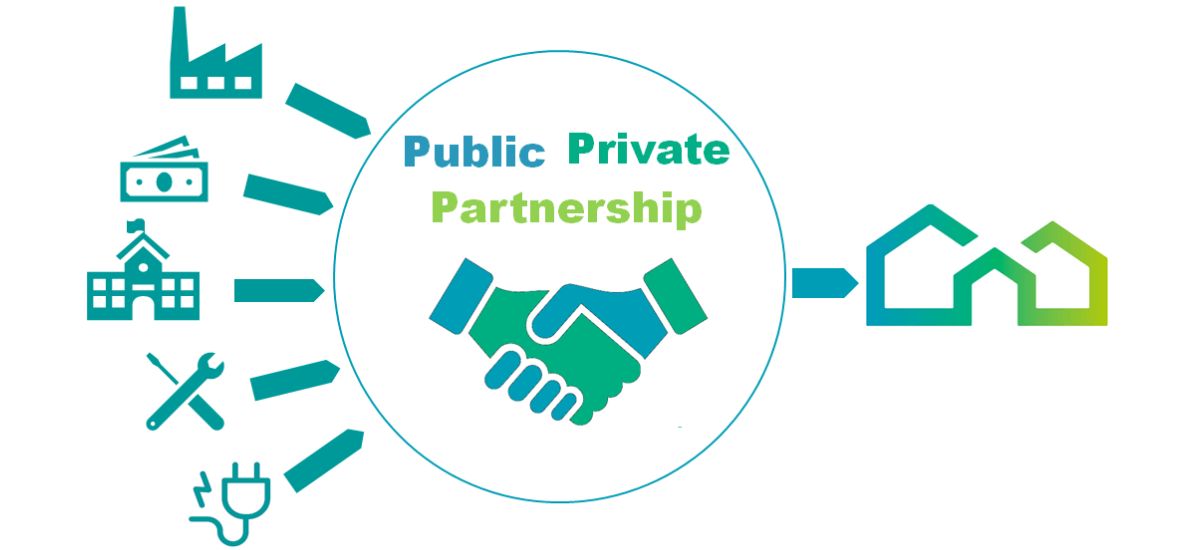India’s ambitious infrastructure development goals require massive investments to bridge the existing gap and fuel economic growth. While the government plays a crucial role in driving these initiatives, the sheer scale of the required investments necessitates the active participation of the private sector. This is where Public-Private Partnerships (PPPs) emerge as a powerful tool for mobilizing resources, expertise, and innovation to accelerate infrastructure development across the nation.
Understanding PPPs: A Collaborative Approach
PPPs are contractual arrangements between the government and private sector entities, designed to deliver public infrastructure and services. In essence, the government provides the land, policy framework, and regulatory support, while the private sector contributes capital, expertise, and operational efficiency. This collaborative model leverages the strengths of both sectors, creating a synergy that can accelerate project execution, improve service quality, and optimize resource utilization.
The Role of PPPs in Infrastructure Investment
PPPs play a pivotal role in India’s infrastructure development by:
Mobilizing Private Capital: The private sector brings significant financial resources to the table, supplementing government funding and enabling the implementation of large-scale infrastructure projects that would otherwise be financially challenging.
Sharing Risks and Rewards: PPPs distribute risks and rewards between the public and private sectors. The private sector assumes a significant portion of the project risks, including construction, operation, and maintenance, while the government provides support and guarantees to mitigate certain risks.
Leveraging Expertise and Efficiency: Private sector entities bring specialized expertise and operational efficiency to infrastructure projects, leading to improved project design, construction, and management. This can result in faster project completion, cost savings, and better service delivery.
Promoting Innovation and Technology Adoption: PPPs encourage the private sector to innovate and adopt cutting-edge technologies in infrastructure development, leading to enhanced efficiency, sustainability, and long-term value creation.
Improving Accountability and Transparency: PPP contracts typically include performance-based metrics and monitoring mechanisms, ensuring accountability and transparency in project implementation. This fosters a culture of efficiency and good governance.
Key Sectors Benefiting from PPPs in India
PPPs have been instrumental in driving infrastructure development across various sectors in India, including:
Transportation: Roads, highways, bridges, airports, ports, and railways.
Energy: Power generation, transmission, and distribution projects, including renewable energy.
Water and Sanitation: Water supply, sewage treatment, and waste management projects.
Social Infrastructure: Healthcare facilities, educational institutions, and urban development projects.
Success Stories of PPPs in India
Several successful PPP projects in India showcase the potential of this model in transforming the nation’s infrastructure landscape:
Delhi-Gurgaon Expressway: This landmark project, completed in 2008, significantly reduced travel time between Delhi and Gurgaon, easing traffic congestion and boosting economic activity in the region.
Mumbai International Airport: The modernization and expansion of the Mumbai airport through a PPP model have enhanced passenger experience and increased the airport’s capacity to handle growing air traffic.
Hyderabad Metro Rail: This world-class metro system, built through a PPP, has revolutionized public transport in Hyderabad, providing a comfortable, efficient, and eco-friendly commuting option.
Challenges and the Way Forward
While PPPs offer immense potential, they also come with certain challenges, including:
Land Acquisition and Regulatory Hurdles: Delays in land acquisition and complex regulatory processes can hinder project implementation and increase costs.
Risk Allocation and Contract Management: Ensuring a fair and balanced allocation of risks and effective contract management throughout the project lifecycle is crucial for success.
Financial Viability and Sustainability: Ensuring the financial viability and long-term sustainability of PPP projects requires careful planning, robust revenue models, and effective risk mitigation strategies.
To overcome these challenges and unlock the full potential of PPPs, the government and private sector need to collaborate closely and adopt a proactive approach. This includes:
Streamlining Regulatory Processes: Simplifying and expediting regulatory approvals for PPP projects will accelerate implementation and reduce project costs.
Enhancing Risk Management Frameworks: Developing robust risk management frameworks and ensuring clear risk allocation between the public and private sectors will mitigate potential challenges and enhance project viability.
Promoting Transparency and Accountability: Establishing clear performance metrics, monitoring mechanisms, and dispute resolution mechanisms will ensure transparency and accountability in project execution.
Capacity Building and Knowledge Sharing: Building capacity within government agencies and fostering knowledge sharing between the public and private sectors will enhance the effectiveness of PPP implementation.
Conclusion
Public-Private Partnerships have emerged as a crucial driver of infrastructure development in India, mobilizing private capital, expertise, and innovation to accelerate the realization of the nation’s ambitious goals. While challenges persist, Someshwar Srivastav stresses to witness on the success stories of PPPs across various sectors demonstrate their potential to transform India’s infrastructure landscape. By addressing the existing challenges and fostering a collaborative approach, India can unlock the full potential of PPPs and pave the way for a future of sustainable and inclusive growth.
According to Someshwar Srivastav, as the nation continues its journey towards becoming a global economic powerhouse, the role of PPPs in infrastructure development will only become more significant. With a focus on streamlining processes, enhancing risk management, and promoting transparency, India can create an enabling environment for successful PPPs that benefit all stakeholders and contribute to the nation’s progress.









